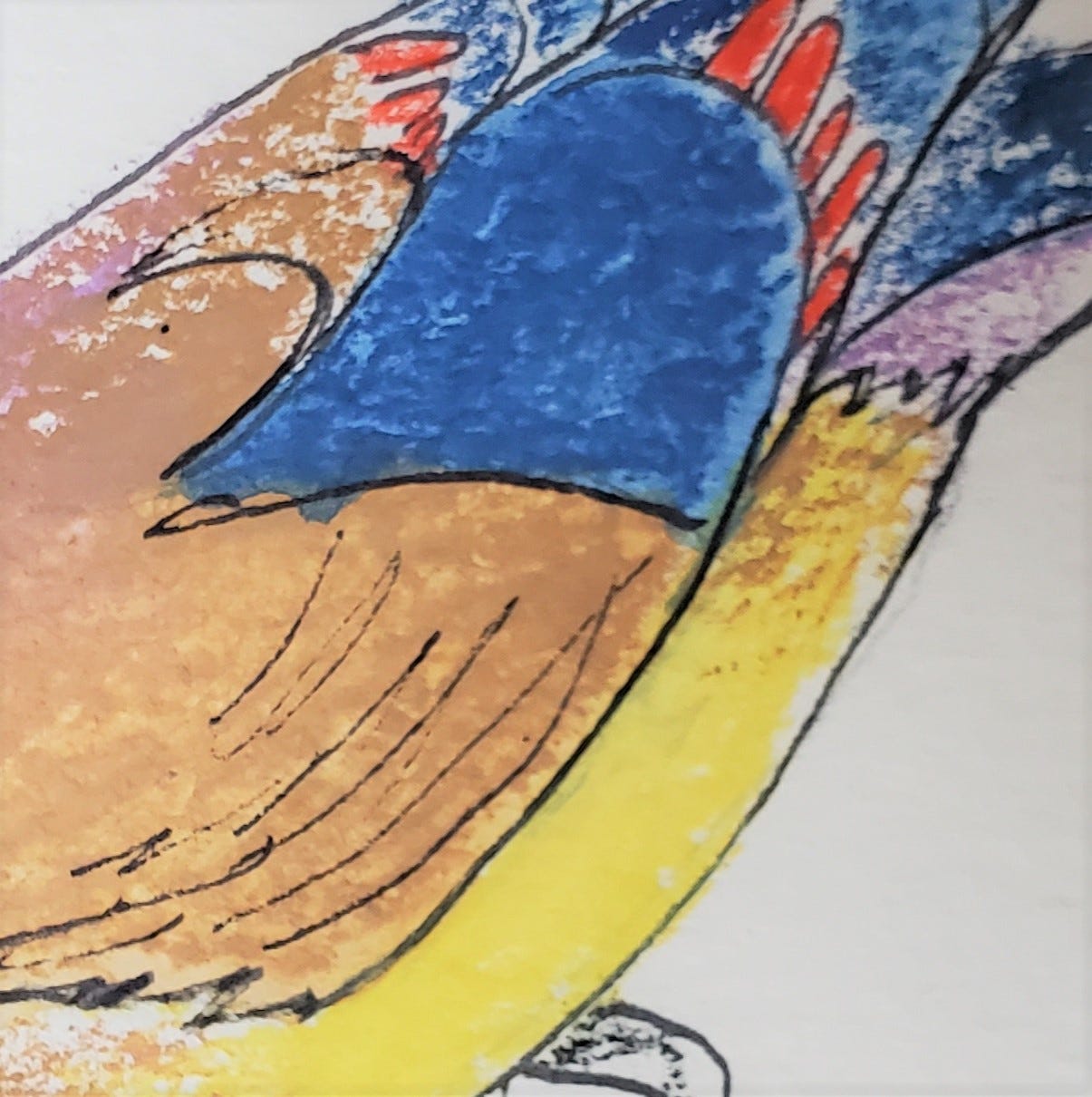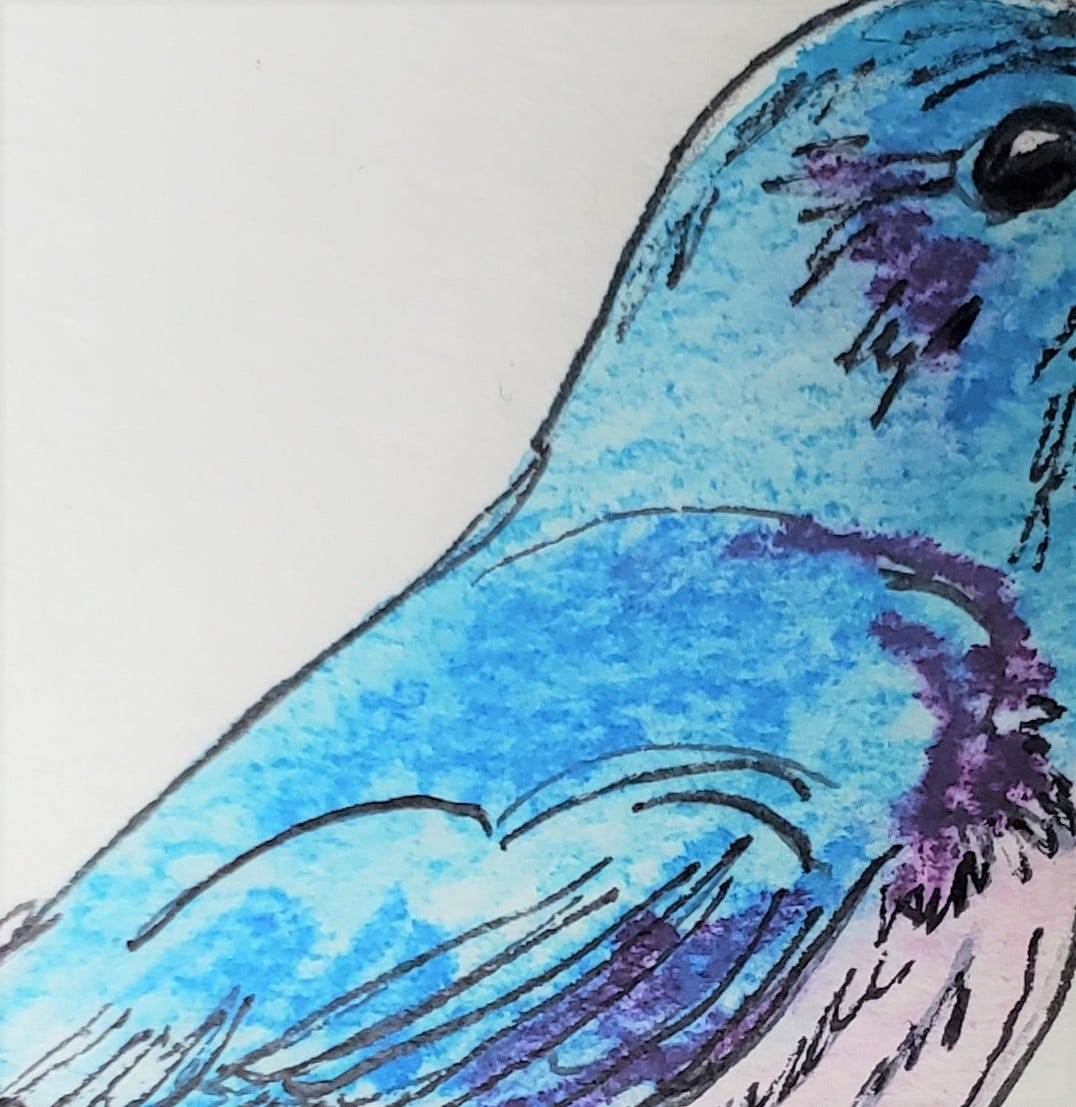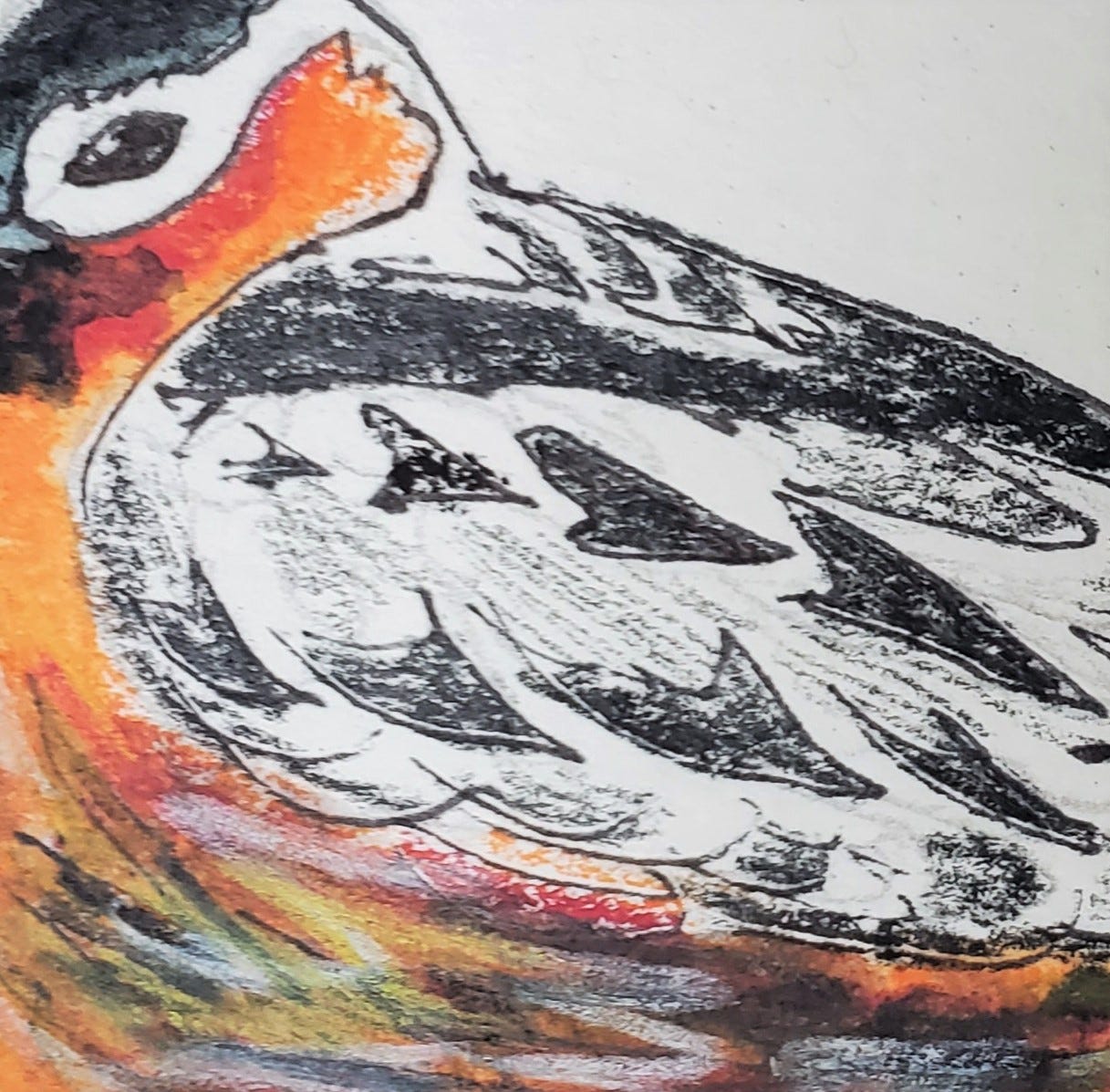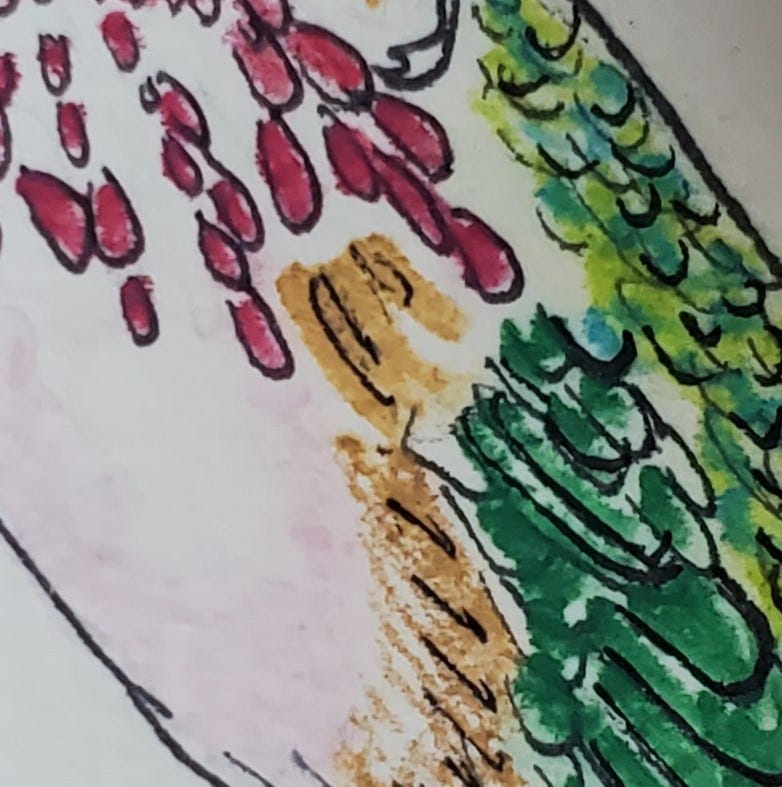I was in coastal Georgia at the beginning of January, a landscape defined by its 368,000 acres of marshland. My first morning there began with the thrum of unknown wings in the dark, the sun a slow-burning ember behind a silhouette of trees on the horizon. The sunrise was a miniature lesson in the ancient relationship of birds and light: different calls came across the cordgrass, cued by the growing brightness of the sky. Great blue heron croaked. White ibis’s wingtips buzzed. Other songs and calls ebbed and flowed from species I could neither locate in the dawn, nor identify by their voices.
I don’t do it justice, of course, but I recorded it. Here’s a snippet:
There is some deep-rooted archetypal comfort in hearing birds at sunrise, don’t you think? It has me wondering what it is about our winged neighbors that has captured human curiosity and imagination for so many millennia. Perhaps it is because birds are creatures both ascendant and bound to creation. Perhaps this is what we, too, long to be.
Birds have found their way into our myths and symbols since time immemorial. Ancient Egyptians painted vultures on their ceilings, wings outspread, as maternal emblems of protection. Doves and pigeons were associated with various goddesses in ancient Mesopotamia. In a 3rd century fresco in the Catacombs of Saint Priscilla in Rome, a phoenix sits in its nest, engulfed in blood-red flames, a symbol of resurrection. In some versions of Inuit creation stories, Raven is responsible for bringing light to the world.
In The Conference of the Birds, an epic Sufi poem composed in 12th century Persia, Farid ud-Din Attar gives us an allegory of the mystical journey to God, in the form of a pilgrimage undertaken by a multitude of birds. The hoopoe calls the world’s birds together and invites them to travel with him to meet their true king, the Simorgh. At first, the feathered cohort is enthusiastic and eager to set out, but one by one, they begin to make excuses.
The nightingale prefers to love and worship the blooming rose instead. The finch lacks courage. The partridge is greedy. The heron cannot leave his devotion to his own misery. The mythical homa, whose shadow bestows kingship upon the person who it crosses, is too proud. The list goes on.
I can see myself in all of the birds and their excuses (that’s the point of course). I haven’t had enough sleep. Maybe when I’m done breastfeeding. I’d rather just relax. Haven’t I done enough today? One of the tensions of motherhood for me is that it has been both the ultimate excuse and the ultimate wakeup call in what is at stake in the choice to reach (or not) for a deeper truth, a deeper relationship with the living world. My steps have faltered. Doubts and disinterests find their way in. I withdraw.
But I have long been pulled back out of myself by birds. Not always for their spiritual symbolism, more often just for themselves. In my book this month, I’m writing about barn owls and piping plovers, crows and arctic terns: some of the birds whose lives have intersected my own.
Last fall, I visited a different marsh, this one in my home state of Maine. I trudged through a third of a mile of muck before realizing the trail dead-ended at an ugly culvert beneath a busy road, the water below a swirl of brown and gray. I was disappointed and annoyed and walked back to the trailhead, where I sat down on a cold concrete bench.
At that time, my daughter was in a phase of asking us to read the same single page in a book, again and again. Some of these lines would play in my head for hours or days. But that Quimney up the chimney no I don’t like him at all. It was hard not to get impatient on the tenth or fifteenth reading of such a line. But, at some point, usually when I’d long memorized the words on the page, I would eventually look over at Aspen. And I would see how intently she was looking, connecting the words again and again with the picture. Taking her time. Not in a hurry. Her eyes traced across the two-page spread, her brow furrowed. A model of careful attention.
I tried to adopt this mindset at the marsh. I sat on that cold bench, and even when I grew restless, I sat there still. I let my eyes trace what was spread before me, again and again. And then I started to see.
The marsh was alive with birds! Swooping and diving, hiding in shrubs, gliding low, hopping on branches, chittering and chattering. Heron, egret, sparrow, crow. How had I not noticed?
Thousands of birds set out on the hoopoe’s journey, facing trials and perils along the way. They must relinquish everything to continue moving forward: fear, pride, doubt, Ego, attachment to all they thought they knew. In the end, only thirty birds reach the gates of the Simorgh.
And Simorgh, it turns out, is a play on words in Persian: Si means ‘thirty’; morgh means ‘birds.’
“You came as thirty birds and therefore saw
These selfsame thirty birds, not less not more;
If you had come as forty, fifty - here
An answering forty, fifty, would appear;
Though you have struggled, wandered, travelled far,
It is yourselves you see and what you are.”1
And so, the birds arrive at last to meet themselves, or rather, the Divine that has been at their center all along, the division between human and God burned away on the mystical journey.
It is a common theme in folklore and myth that, upon death, the soul departs the body in the form of a bird. This would imply that the bird has been there along. There’s a certain mysticism to that notion, too. I enjoy the sense that we are, at our core, part bird. Indeed, in many bird myths, birds take on the qualities and abilities of people; or people take on the qualities and abilities of birds. Myths blur the human-bird boundary. As Joseph Campbell famously said: “A myth is something that has never happened, but is happening all the time.”
So, what is happening now? In part, the human-bird boundary is blurred in new, troubling ways: habitat loss, pesticide use, increasingly off-kilter migration cycles, plummeting populations of insects. We and birds coinhabit a different kind of hybrid world.
How do we learn to live well within this story?
In the closing lines of When Women Were Birds, Terry Tempest Williams writes: “Once upon a time, when women were birds, there was the simple understanding that to sing at dawn and to sing at dusk was to heal the world through joy. The birds still remember what we have forgotten, that the world is meant to be celebrated.”
This is perhaps what we ought to strive for: Re-becoming these creatures who are both bound to creation and ascendant, creatures who are singing, singing, singing.
Reading / Watching
Saint Omer, by Alice Diop. A deeply painful, beautiful, haunting film. (You can read the NYT review here.)
Sounds Wild and Broken by David Haskell. One of those books I keep returning to, especially as I’ve been working to understand how birds experience sound!
The Sense of Wonder by Rachel Carson. I didn’t know until reading this that Carson adopted her grandnephew, following the death of his mother. This gentle book is about introducing children to the earth’s marvels. “I believe children can be helped to hear the many voices about them. Take time to listen and talk about the voices of the earth and what they mean.”
The Conference of the Birds, Farrad ud-Din Attar. Translated by Dick Davis and Afkham Darbandi, page 219








Oh, what a beautiful way to start the day. I’m reading in bed before I join the family fray, and I am reminded of lying in my grandparents bed listening to the radio station that always played bird song at dawn. I hadn’t had a chance to revisit that memory in a long time. And thank you for taking us into the marsh with you. That idea that the bird has always been with us and will depart with the soul does will stay with me for a long time
you have me weeping over this one. what a beautiful reminder that I didn't know I needed this badly.